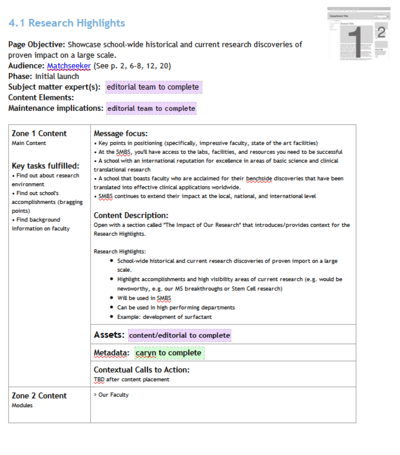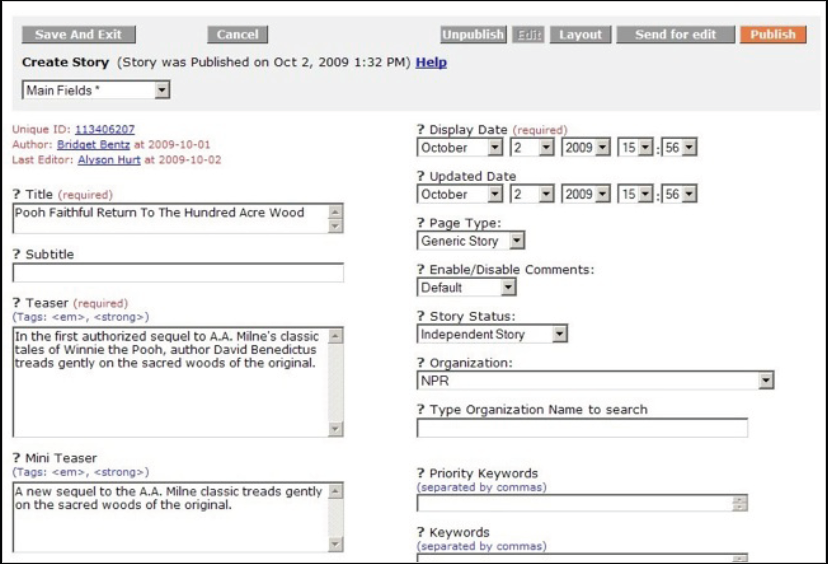I’m not a designer by training. In fact, I am not a designer at all. My extraordinarily talented brother was blessed with all the artistic ability. I’m a writer-turned-content strategist who dabbles in design because my agency lacks the budget for a full-time designer. All of this is basically a long-winded way of building up to the admission that in my scrambling around to play amateur designer, I frequently come across concepts that are assuredly quite familiar to trained designers, but that are new to me.
So when I read about skeuomorphic design, it was a bit of a revelation. I suppose that on some level I recognized a skeuomorph, which Wikipedia tells me is “a derivative object that retains ornamental design cues to a structure that was necessary in the original.” I see these things all the time—the page-flipping animation in iBooks, fake spokes on the hubcaps of cars, the veneer my keyboard is currently resting on. But now I had a name for the concept.
I was particularly struck by skeuomorphic design because it resonated with something I’d been pondering already. An academic acquaintance recently asked his Facebook friends for the best way to organize the various PDFs of journal articles he keeps on his local machine. My friend’s issue: he wanted to be able to save the same file under multiple topics without also having to create multiple copies of the files.
This seems like it should be a simple matter. But it’s surprisingly complicated, typically requiring the download of some sort of software package that one must then learn to use.
It reminded me of a thought to which I keep coming back: We need a better metaphor for our online world.
The Filing Cabinet
People have been writing things down for…well, for a long time. And pretty early on, it occurred to folks that writing things things down was useful both for passing information along and for recording information you didn’t want to forget. Of course, that last one meant that once you wrote something down, you needed to be able to find it again. And that’s why the person who invented paper invented the filing cabinet a few days later. (Note: I’ve no idea if that’s true. But if it’s not, it should be.)
So for a lot of years, knowledge workers had to know two things: What to write down and how to organize whatever they wrote down.
Fast forward to the 1980s and the dawn of the personal computer age. “Writing” began to consist of pushing keys to create terribly complex sets of 0s and 1s on a magnetic storage device. Writers with PCs needed to know what to write down and how to tell the computer which set of 0s and 1s to retrieve.
So some really smart people decided that to make things easier, we’d just use a metaphor that everyone already understood. We could call each complete set of 0s and 1s a file. These files could be represented by an image of a piece of paper. To complete the metaphor, we could put those pictures of paper into little pictures of folders. Users could name the files and the folders exactly like they organized the pieces of paper that they used to create.
In short, we built a cool new technology and then immediately saddled it with a 1000+ year old metaphor.
Why It’s Time to Ditch the Metaphor
As a general rule, I’m a big fan of metaphors. This probably comes from my time as an academic philosopher. Philosophers deal with a lot of abstractions. Great philosophers are able to grapple with the abstractions directly. The rest of us tried to sneak up on the abstractions through analogies, metaphors, and thought experiments. Those of us who are (or were, in my case) primarily philosophy teachers spent a lot of time trying to craft metaphors that got at the complexities of the abstraction but could still be grasped by sleepy freshmen.
Metaphors are a great way of helping us to understand new concepts by way of familiar constructs. But metaphors also run the risk of obscuring important differences.
I think this is especially true of the digital world. Files and folders helped to make a new technology more acceptable by making the computer an extension of things that were already familiar to the business world. But that same metaphor also limited our use of the computer by saddling digital files with all the limitations of their physical brethren. The most notable of these:
Physical files can only be in once place at a time.
Digital files aren’t like that. The physical location of all the 0s and 1s that make up a file is completely independent of the visual metaphor we use in constructing our UI. It’s possible to create dozens of different taxonomies that point to a single set of content. There’s no conceptual reason for continuing to use a digital filing cabinet metaphor that limits us to a single navigational structure.
The Internet has started to move away from the filing cabinet metaphor. Tagging and folksonomies allow for multiple paths to content on a website. APIs hold out the promise of multiple apps with distinct UIs for any given body of content.
The enterprise is starting to learn from the web. At CBO, we’re using SharePoint 2010 internally. SharePoint’s document libraries can be used as traditional shared storage, but they also hold out the possibility of a radical break from the traditional model. A few early adopters here have experimented with SharePoint’s metadata capabilities. There are projects that consist of a single document library and documents that are tagged in 10 different ways, allowing collaborators to filter on multiple dimensions.
That model is still the exception, though. Most of our users still insist on a single hierarchy, and a lot of our SharePoint users deploy folders in their libraries. (Note to Microsoft: Please, please kill off folders in the next iteration of SharePoint. Their very existence makes it too hard for ordinary end users to shift to your new metaphor.) Files and folders are familiar—especially in an enterprise setting, and even more especially in a world in which there are still many decision-makers who began their careers using typewriters and carbon paper.
Weaning people away from the digital filing cabinet will take some time. It will be even harder if we’re leading them into a world that isn’t based on a familiar metaphor. I wish I had a replacement to suggest. Unfortunately, diagnosing a problem is always easier than solving it. Here’s hoping that some real designers can offer a solution. If we’re really lucky, it might carry us through the next 30 or so years of our new digital world.

 A first-time visitor might not have appreciated the collection. Indeed, most visitors came for the wrought-iron spiral staircase that wound its way through three stories of glass-floored stacks. The casual visitor could find great bargains on the mid-century-vintage hardcover fiction and non-fiction resting on original, turn-of-the-century shelving. Dedicated bibliophiles might venture away from the stacks into the third floor room that held late 19th-century copies of classic novels. Only the really dedicated browser would notice that paperback fiction resided in much-less-glamorous basement. Those who loitered by the checkout might also notice the first editions and more-than-a-century-old books in the locked barrister cases.
A first-time visitor might not have appreciated the collection. Indeed, most visitors came for the wrought-iron spiral staircase that wound its way through three stories of glass-floored stacks. The casual visitor could find great bargains on the mid-century-vintage hardcover fiction and non-fiction resting on original, turn-of-the-century shelving. Dedicated bibliophiles might venture away from the stacks into the third floor room that held late 19th-century copies of classic novels. Only the really dedicated browser would notice that paperback fiction resided in much-less-glamorous basement. Those who loitered by the checkout might also notice the first editions and more-than-a-century-old books in the locked barrister cases.
